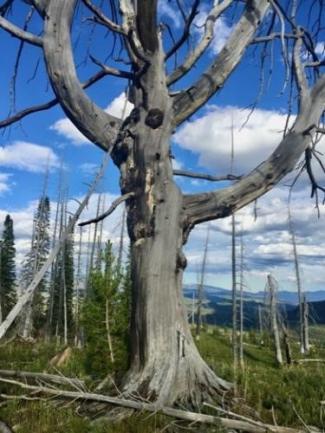Assessing the impacts of climate-altered fire regimes on population and community dynamics in Rocky Mountain Forests
Disturbance regimes globally are changing as a result of climate change, altering ecosystem structure and function. To date, efforts to understand forest response to climate-altered fire regimes in temperate forests have been limited to montane and subalpine conifers with wind dispersed seeds, however responses may be influenced by species with different life history traits. I investigated potential population responses to increasing fire frequency and size in whitebark pine, a foundation species of conservation concern. My goal was to determine the effect of increasing fire frequency and size on the odds of extirpation of a whitebark pine metapopulation. However, parameter estimates necessary to achieve this goal were limited, namely demographic parameters and those related to fire induced mortality rates. I began by estimating vital rates required to parameterize a demographic projection model and describing the distribution of fire severity classes of wildfires affecting whitebark pine forests. We used these estimated parameters and others derived from literature to project whitebark pine population size 500 years into the future. We compared odds of extirpation among six scenarios comprising three fire frequencies (fires suppressed, mean historical fire return interval, and increasing fire frequency) and two seed dispersal probabilities (proxies for wildfires ~100,000 and ~20,000 ha in size). Increasing fire frequency resulted in higher odds of extirpation with more frequent and larger fires. These results confirm findings that distance to the nearest seed source improves forest resilience and suggests that metapopulation connectivity will be integral to continued persistence. Further, species with long-distance seed dispersal mechanisms may be better equipped to confront climate-altered fire regimes than their wind dispersed counterparts

